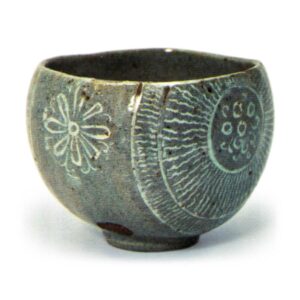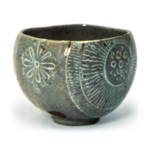
The official kiln of the Owari Tokugawa family. It was located in the Omukaimaru district of Nagoya Castle. In 1610, Yoshinao, the founder of the clan, regretted the dispersal of Seto potters due to the policy of industrial protection, and summoned back his grandsons, Nihei (Takeo, Ko Nihei) and Karasaburo (Riemon), who were in Gonoki Village, Toki-gun, Mino Province (Sogi-cho, Toki City, Gifu Prefecture), and in 1660, when the second lord Mitsutomo took over, he also sent Tahei back to Akazu Village ( The kiln was established in 1616. This kiln was established in August 1616 (Genna 2), with Jinbei and Karasaburo as the first employees, and later Taibei joined them and their descendants inherited the kiln. The business temporarily ceased to exist, but the 10th generation, Naricho, had Kato Karazaemon of Seto revive the business and produce new dyed porcelain. In 1871 (Meiji 4), the kilns were removed along with the Seto Ochaya and completely abandoned. The clay was from his grandmother’s bosom, which he had been forbidden to dig privately. At first, he produced elegant wares mainly with blackish-brown glaze in the Kosedo style, but a special Omukai glaze appeared in the middle of the period and was also known as Omukai celadon. Annam ware was also copied at this kiln, and it is said that Chen Yuan was related to this kiln. At first, the products were inscribed with the name “grandmother’s bosom,” but those with the mark “Omamii” are said to have been made after the revival of the kiln. (History of Japanese Ceramics in the Early Modern Period)








